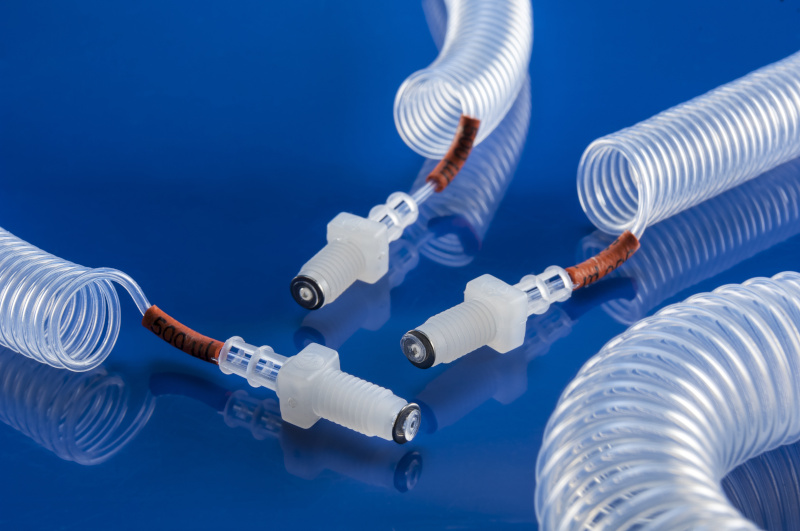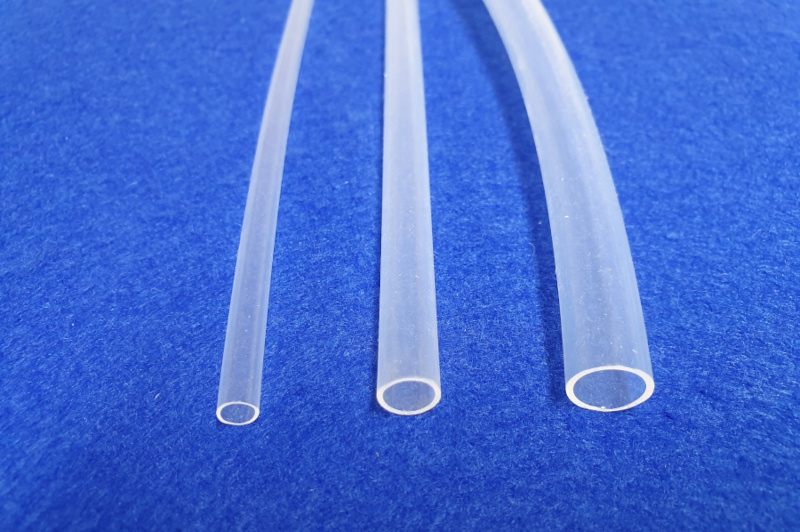How to shrink fluoropolymer heat shrink

Fluoropolymer heat shrink tubing enjoys unique properties, including resistance to temperature, chemicals and electricity, and low friction and non toxic features. These unique properties make PTFE, FEP and PFA heat shrink ideal for covering and encapsulating components, such as roller coatings, temperature sensors and medical devices.
So, how do you apply fluoroplastic heat shrink sleeving to your components? All you need is a hot air gun and to follow the heat shrinking instructions closely.
Characteristics of fluoropolymer heat shrink tubing
From PTFE to FEP and PFA, fluoropolymers enjoy different shrinking characteristics and working performance, and are thus suitable for different applications. For example, FEP heat shrink is ideal for encapsulating electrical and temperature sensitive components, while PTFE is best suited to protect complex profiles against high temperatures above 260°C. Find out which fluoroplastic heat shrink is best suited for your application in the Best Heat Shrink Tubing article.
Heat shrink ratio
Fluoropolymers offer different shrink ratios, from 1.4:1 to 2:1 and 4:1. A sleeve with a 2:1 ratio shrinks to half its expanded diameter, while a tube with a 4:1 ratio shrinks to a fourth of its expanded diameter. Find out more about the sleeving sizes we offer for FEP Heat Shrink, PTFE Heat Shrink and PFA Heat Shrink.
Heat shrink temperature
Fluoroplastics also possess different heat shrink temperatures:
-
FEP and PFA shrink at 110°C and require a hot air gun at 200°C.
-
PTFE shrinks at 330°C with a hot air gun temperature of 440°C.
Fluoropolymer heat shrinking instructions

To apply heat and shrink the fluoropolymer heat shrink tubing, you will require a hot air gun. We recommend a gun with a capacity of 1.5KW. Please take care when handling hot air guns and hot components.
-
Select the correct heat shrink sleeve size. The expanded tube diameter should be significantly larger than the component diameter to allow for a generous amount of shrinkage. The recovered sleeve diameter should be smaller than the component diameter to cover the component.
-
If covering a large thermal mass with PTFE, preheat the component in an oven at 400°C to prevent the chilling of the PTFE heat shrink tube which causes a loose fit.
-
Cut the chosen sleeve to the right length, allowing for a small overlap, and apply over the component to be coated.
-
Set the correct temperature on the hot air gun (see heat shrink temperature above) and start shrinking at one end of component. Point the gun slightly away from the direction you are shrinking to avoid premature shrinking which cause wrinkles.
-
Slowly rotate the component and gradually move the hot air gun along the length of the part. The gun should shrink 12mm of heat shrink for each revolution.
-
Take care to allow the free end of the sleeve to stay loose and not to bind on the component. The tube normally lengthens during shrinking, so you should observe a lengthening of the free end.
-
Continue to shrink past the end of the component and allow the sleeve to neck down to smaller diameter.
-
Allow the component to cool and trim the excess material with a sharp knife blade.
Check out our demonstration video on how to apply heat shrink tubing to a roll cover:
Fume precautions during heat shrinking
Like all plastics and rubber, fluoroplastics decompose at high temperatures and give off unpleasant fumes. Unlike other polymers, the fumes from fluoropolymers are odourless and may therefore not be noticed during overheating of the material. Ample ventilation must always be provided when heating PTFE heat shrink above 300°C. If used in a production process, extraction equipment is recommended.
Here at Adtech, we are specialists in delivering innovative fluoropolymer solutions for your technical applications. Find out more about our Heat Shrink Tubing and Sleeving.
In addition to PTFE, FEP and PFA heat shrink, we also offer Polyolefin Heat Shrink which is ideal for electrical insulation and mechanical protection. Available in 2:1 and 3:1 shrink ratios, Polyolefin starts to shrink at 70°C with a hot air gun temperature of 110°C.
Share this article:
Related News Articles



